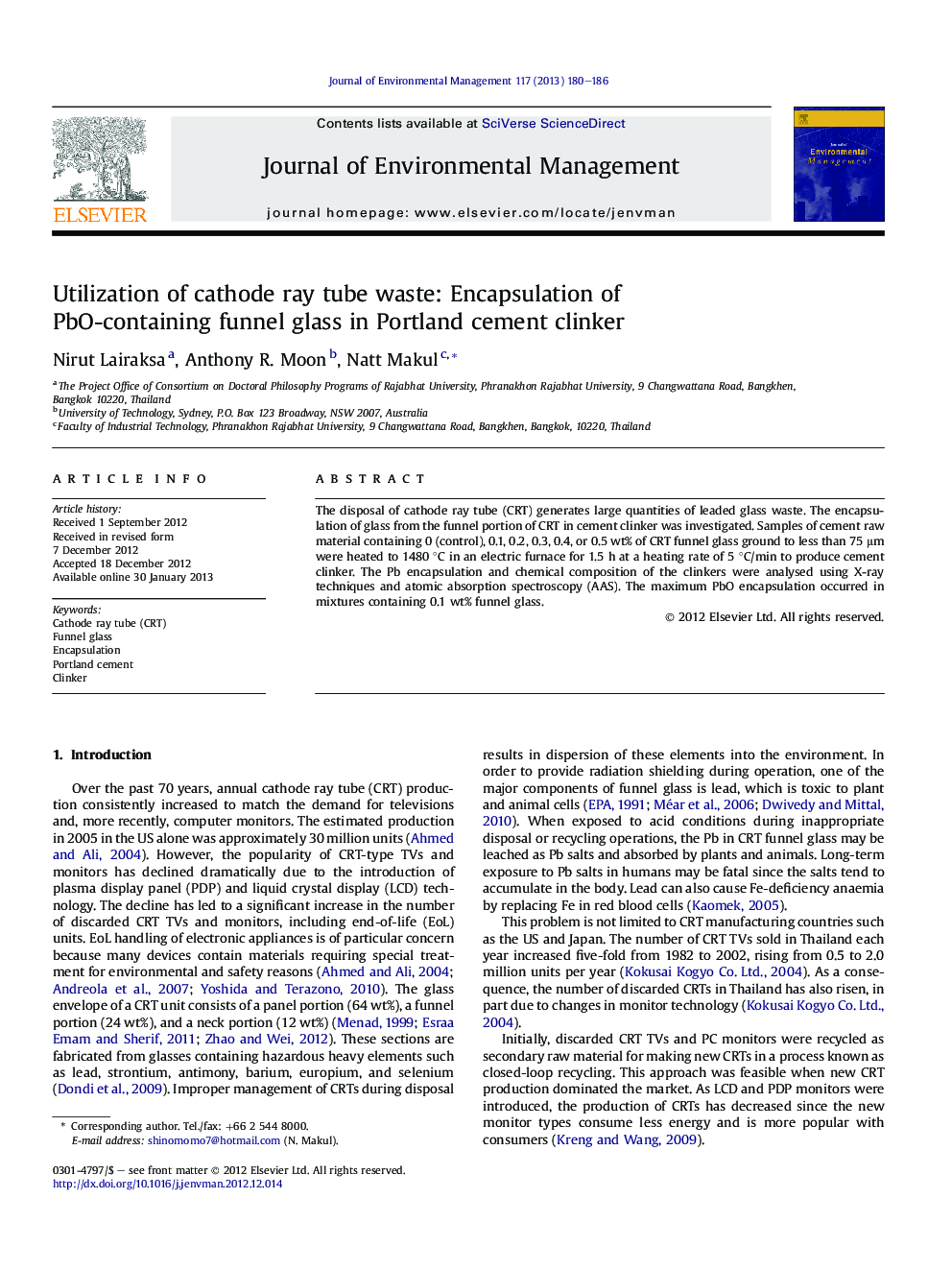| Article ID | Journal | Published Year | Pages | File Type |
|---|---|---|---|---|
| 1056314 | Journal of Environmental Management | 2013 | 7 Pages |
The disposal of cathode ray tube (CRT) generates large quantities of leaded glass waste. The encapsulation of glass from the funnel portion of CRT in cement clinker was investigated. Samples of cement raw material containing 0 (control), 0.1, 0.2, 0.3, 0.4, or 0.5 wt% of CRT funnel glass ground to less than 75 μm were heated to 1480 °C in an electric furnace for 1.5 h at a heating rate of 5 °C/min to produce cement clinker. The Pb encapsulation and chemical composition of the clinkers were analysed using X-ray techniques and atomic absorption spectroscopy (AAS). The maximum PbO encapsulation occurred in mixtures containing 0.1 wt% funnel glass.
► The maximum PbO encapsulation occurs at 0.1 wt% addition of funnel glass. ► Cement raw material contained additions of 0% (control), 0.1, 0.2, 0.3, 0.4 and 0.5 wt% of CRT funnel glass. ► The highest free lime reduction occurred in clinkers containing 0.4 wt% glass.
